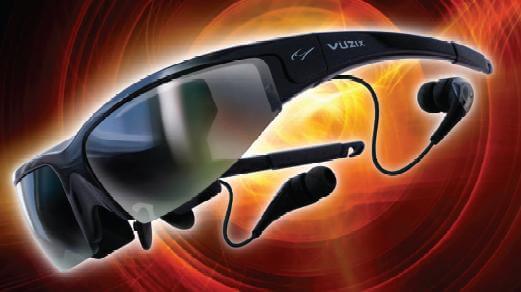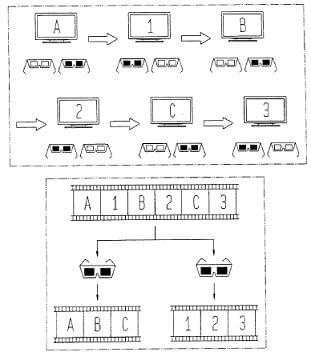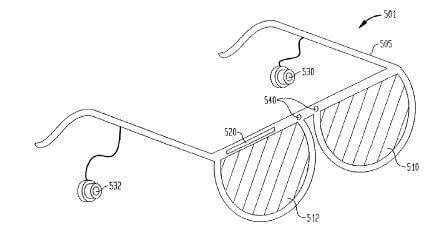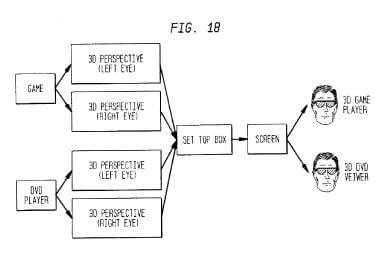Sony Patents Turn 3D TV into 2-Shows-At-Once…Maybe you just want video goggles?

Share
If you buy a 3D TV later in the year you may eventually get some bonus capabilities you never considered. According to recently filed patents, Sony is pursuing technology which would allow multiple people to view different images on the same screen. New 3D TVs use shuttering glasses that alternatively close the left and right lenses in time with alternating images on the monitor. Generally companies want to use this for stereoscopic displays (3D TV). Sony's new patents wouldn't be displaying a right and left image, but rather two completely different images. This means that Person A could be watching a cartoon on Channel 12 while Person B watches reality TV on Channel 5 as the TV rapidly switches between images and their glasses are tuned to different shuttering patterns. With the right shuttering algorithms you could display both channels in 3D as well. It's a cool idea and one that could have a whole bunch of applications from video games to censoring television for kids. But we may do better by just making each pair of glasses be its own TV.
As I mentioned when we reviewed the developing 3D TV trend, one of the major drawbacks of these systems was that they require everyone to wear special glasses. These shuttering lenses may cost $50 or so a pair and you'd need a set for each person in your house, plus a few more for visitors. To me that investment is a little silly, but Sony's new patents are making me take it serious. With these new shuttering protocols, one could essentially let each person with a pair of shuttering glasses to watch their own show. As one of the diagrams in the patents demonstrates, the glasses could be fit with ear buds so that each person could have their own audio as well. People could share the space but have their own personalized media experience.
That may sound a little anti-social, but there are some cool applications I can think. In video games, multiplayer games sometimes require you to split the screen so that each person gets their own viewpoint. Sony's glasses would let each person use the full portion of the TV. Game developers could come up with many other uses for the technology such as quiz shows, sports, mazes - anything that benefits from giving different points of views to different players.
And that's just in games. Kids and parents could watch TV at the same time but not watch the same channel. Parents can watch their scary adult-content crime procedurals, while kid's watch even scarier edu-tainment. While I'm not one for censorship, TV could be broadcast with different censoring levels so parents can let their children watch shows with them, minus more graphic images and sounds. In business, a single screen could allow people to alternate between watching a shared image and switching to a personal one. This could allow for people to collaborate and tinker on their own at the same time. There are many more possible applications for personalized viewing in a shared space (I just thought of most of the above on the fly).
Be Part of the Future
Sign up to receive top stories about groundbreaking technologies and visionary thinkers from SingularityHub.


Once we each have our own glasses and our own audio and video, we've basically given each person their own TV. Which begs the question...why not just make the TVs the size of goggles and hand each person their own pair? Then you could have all the same benefits I just talked about, but you could take your TV-glasses anywhere, no need for a jumbo screen on a wall. And this technology is available right now from developers likes Vuzix. Their glasses are stereoscopic (just like the 3D TV) and there's no limit on the number you can use in a room. Sony's new patents look to be working on just 2-4 channels on the same screen. Not only that, but in a shared TV system, each new channel is degrading quality as each image has less time to be on the screen. When each person has their own goggles, quality stays the same no matter which channel you watch. There are other trade-offs such as screen resolution, eye fatigue, and comfort that may balance things in favor of the 3D TV systems...but the goggle TV idea is still pretty enticing.
So, would you rather buy a $4000 3D TV and half a dozen $50 glasses, or just shell out $400 a pop for 3D TV goggles? I'm starting to get the feeling that the really successful 3D TVs of the future could just be a small HD tuner box that broadcasts to everyone's TV goggles in the house. I mean, c'mon - if you're going to give everyone their own personalized viewing experience, why do it half-ass?
[image credit: US Patents via Free Patents Online]
[source: US Patent #20100177172, US Patent #20100177174]
Related Articles

This Light-Powered AI Chip Is 100x Faster Than a Top Nvidia GPU

How Scientists Are Growing Computers From Human Brain Cells—and Why They Want to Keep Doing It

These Brain Implants Are Smaller Than Cells and Can Be Injected Into Veins
What we’re reading



